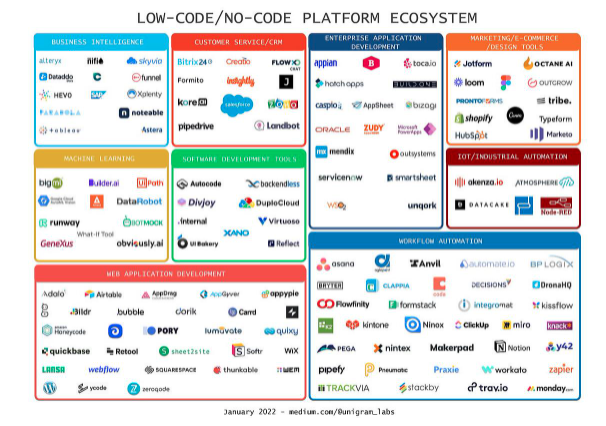
For some time, I’ve been looking for one “source” that curates modern takes on HR Tech, perspectives from the people who build it, and its impact on enterprise — something that’s tailor-made by professionals for decision-makers.
I never found it — so I decided to build it.
Every week, I’ll be sharing fresh insights on tech platforms, design, data, and the future of work — straight to your inbox.
My Thoughts
Some of you may remember Event Farm Co-Founder Ryan Costello as our first guest author for Exit Interview. 🙂 Well, I was searching for this week’s latest and greatest in HR news and was delighted to come across his name once again! Event Farm, Ryan’s event engagement and experience company, has debuted its latest service to help event organizers strengthen COVID risk mitigation policies 😷 💉 and streamline in-person event safety without compromising attendee experience. 👍 🎟️
The latest initiative, in partnership with major COVID-19 test providers and CLEAR Health Pass, provides organizers with direct access to bulk orders 📦 of COVID-19 Antigen and PCR test kits for at-home, proctored, and onsite services. The Event Farm registration platform has also been outfitted with new features that allow organizers to collect attendee shipping information and coordinate at-home test delivery, track test results, and support text and email communications. Ryan is hopeful that the innovative toolkit 🧰 will help people feel more comfortable with in-person events: “As we continue to help rebuild the events industry, we’re seeing that COVID-19 vaccinations alone may not be enough to host safe events and there is an increased need to help attendees and event organizers get access to testing kits and validate results in real time.” It’s always exciting to see a familiar face leading digital transformation and I look forward to more exciting news as the rollout continues! 🎉
Market Moves
Low-Code / No-Code (LCNC), aka Low Code Application Platforms (LCAP), is changing what employees and consumers expect from their software experience in 2022. 👨🏾💻
Research firm Forrester, who was the first to coin the term in 2014, defines LCNC/LCAP as “application development platforms that enable rapid application delivery with minimal hand-coding, and quick setup and deployment.” 🖥️ 💨 In practice, this translates to capabilities like drag-and-drop and painless third-party integrations (think Wix or Shopify).
LCNC solutions don’t require users to have a formal programming education, giving birth to a new class of citizen developers. 🤓 As customer experience and organizational agility continue to drive business strategy decisions, having widespread access to tools once restricted to developers represents a considerable competitive advantage. The market for such solutions is expected to reach an impressive 31.3% growth rate and a value of $190.8 billion by 2030. Here are some of the industry’s hottest startups for 2022:
Airtable: Airtable earned Unicorn 🦄 status for its agile and intuitive cloud-based spreadsheet-database hybrid solution. The company raised $735 million in December, starting the new year with a valuation of $11 billion.
Crowdbotics: Crowdbotics is a premiere example of how low-code solutions can help organizations and their IT teams defeat burnout. 🔥 🧑🏻💻 🔥 The platform allows non-tech employees to design apps without learning programming languages using visual modeling, which is translated to code in real-time using artificial intelligence. The company announced in January that they have raised a total of $22 million so far.
Pipefy: Pipefy rode into 2022 hotter than most after being named the #1 Business Process Management Platform, for the third year in a row, by software review company G2. 🏆 That, combined with its total $138.7 million in total funding, is hinting at big things for the company’s workflow management solutions this year.

Tech Innovation at Work
Lately, all the podcasts 🎙️ I listen to are overflowing with ads for ZipRecruiter’s candidate-matching tool, which uses artificial intelligence 🧠 🤖 to find qualified job seekers and invite them to apply for your open position. AI-powered applicant tracking systems (ATS) and recruitment management systems (RMS) like ZipRecruiter, Matchr and Skeeled are being used by companies all over the country to efficiently manage the average 250 applications 📄 submitted to each job posting. However, a recent piece from Wired reminded me why it’s dangerous to stray too far from the human element of human resources. 👤 Because while we may think computers 🖥️ can find the most qualified applicants better than we ever could, applicants are disagreeing — and now they’re trying to beat the system. Resume hacking, such as keyword stuffing and tools that help job seekers “optimize” their resumes for specific jobs, is seen by some candidates as more effective at getting their application in front of employers than their actual experience. 😳 That’s a problem — not only because we want to offer a positive candidate experience, but because it points to serious limitations in the current recruiting process. Check out the article from Wired, which includes a Harvard Business School study about the “Hidden Workers” 🔍 that fall through the cracks of bad ATS algorithms, here.

For most of us, understanding the inner workings of the tech we use every day seems daunting — and perhaps a little above our pay grade. 😬 💲 Traditional organizational structure once kept individual departments sequestered behind cubicle walls and office floors. But tradition has no place in 2022 🙅 where innovation, collaboration, and agility are the gold standard of business. For these reasons and many more, tech literacy 💾 📚 is one of the most important skills any worker can have. Fortunately, you don’t need to sign up for coding bootcamp or go back to school for Computer Sciences. That being said, you can’t expect to be highly effective in a role surrounded by software without learning the basics. These basics include understanding the people behind the programming and what makes a tool useful to the people who actually use it. I gleaned very actionable insight from this article from Future, and I highly recommend giving it a read. 🙇
The Changing Workplace
Global consulting and professional services firm EY has announced that it will offer all 312,000 of its employees a full ride to college 🎓 to earn a Masters in Sustainability. 🌍 💯 The fully-accredited program, The EY Masters in Sustainability by Hult, is the third professional development initiative EY has designed in collaboration with the Hult International Business School.
EY reports that its annual spend for learning and education sits at roughly $500 million, 🤑 which some might see as a small price to pay for employee retention amidst the Great Resignation. It isn’t just a matter of employee engagement, though. As a consulting firm, EY stands to benefit greatly from offering comprehensive professional development in sustainability, the market for which is expected to reach $16 billion within the next five years.

Even with the holiday season long gone, more and more companies are turning to gift-giving 🎁 as a way to connect with their distributed teams. If you’ve been considering sending some love to your employees, here’s a tl;dr on the current state of corporate gifting:
- Vests are out, blankets are in: Working from home 🏠 leaves little opportunity to sport branded vests or shirts. In order for your gift to feel meaningful to employees, it needs to be relevant and enjoyable. Home office swag like candles, mugs, and, of course, blankets are the way to go.
- Opt for personalized gifting solutions: 🏖️ Gift giving is a chance to show employees that you care about them, so why not make sure it’s something they love? This is especially relevant when it comes to the growing trend of experiential gifts. Enterprise gifting companies like Blueboard offer organizations streamlined and organized solutions for giving employees unique activities and experiences without the risk of anyone with a fear of heights receiving zipline tickets.
- Have a generous (but reasonable) gift budget: 👛 According to Blueboard, companies spend 0.5% to 2% of payroll on gifts, the higher end of the budget being fairly new as companies reallocate funds from real estate and in-person events.
- Gifts should be rounded out with a human touch: 👤 a hand-written card or thoughtful note is still the most important gesture.
- Above all, avoid backpacks and pens: 2019 called — they want their outdated gifts back. 😏
“Dinogate” 🦖 has been ripping through the headlines for the past week as several damning emails, written by IBM’s top executives, were made public as part of a 2018 lawsuit against the company for age discrimination practices. In one email, a HR exec referred to older employees as “dinobabies” 🤭 and proposed strategies devised to push the group out, such as limiting internal mobility to make positions available to younger candidates. The emails also include discussion of implementing a policy mandating that no early hires would be eligible for mass layoffs within their first 12 months of hire. 🗓️ In the wake of the controversy, an IBM spokesperson assured us that the documents are, “not consistent with the respect IBM has for its employees,” and that the company never used discriminatory practices. However, the statement is noticeably lacking in apologies. 😬 This failed campaign to push out older team members is more than a blatant violation of protections for older members of the workforce. It also demonstrates that IBM fundamentally misunderstands how to make their company more attractive to the incoming workforce, as Gen Z employees have again and again been shown to show interest in organizations who prioritize DEI and value their employees as individual assets. I highly doubt their efforts will have a positive impact on their current recruitment efforts, and it’s likely they’ve caused significant damage to their company culture — perhaps irreparably so. I know this isn’t My Thoughts, but, if you ask me, IBM has truly thrown the (dino)baby 🦕 out with the bathwater on this one. 🪣
Finally, here is the latest roundup of bite-sized leadership inspiration, courtesy of the Forbes Human Resources Council. 🏛️ This month, I had the pleasure of joining other wonderful thought leaders in the world of people management to offer advice on fostering human connection with your employees. Check it out here.
All About Data
With people watching enviously as employees at 50 organizations around the world participate in a four-day work week pilot program, 🤤 calls of wider adoption are only getting louder. Organizational software company Qualtrics just dropped their latest pulse survey of 1,000 full-time US employees on their feelings about a four-day work week. Here are the highlights:
First of all, the people have spoken: 92% of respondents want a four-day work week:
- 79% say it would improve their mental health 🧠
- 82% say it would make them more productive 💡
- 88% say it would improve their work-life balance ⚖️
- 60% say it would help keep employees from slacking off 😴
But when it comes to how that would actually work, the results are a bit more mixed. 🤔 72% of employees say they would have to work longer hours on workdays to complete the same amount of work.
However, that doesn’t seem to deter people. 37% of all employees would take a paycut of 5% or more for a four-day work week. For tech employees in particular, that number jumps to 54%. 👩💻
We can’t look at this only through rose-colored glasses, because there are some concerns about KPIs:
- 46% say a four-day work week would have a negative impact on sales and revenue 📉
- 55% say a four-day work week would frustrate customers 😤
- 40% of individual respondents say a four-day work week would negatively impact sales and revenue, compared to 53% of senior leaders 💰
Senior leaders may have reservations, but they may not have a choice. 😰 Respondents ranked four-day work weeks as the number one thing that would keep them at a company:
- 81% say a four-day work week would increase their feelings of loyalty to their organization 🤝
- 82% agree that it would help them recruit talent 🙇
However, there’s a middle ground employees are willing to consider: paid mental health days, which 95% of respondents identify as a long-term solution for employee wellness and mental health. Plus:
- 86% say paid mental health days would help their company recruit talent 😀
- 89% say paid mental health days would help them recharge and be more productive 💪
- 41% say a paid company-wide mental health day would influence them to stay with their employer. For whatever reason, that number drops to 39% for a paid mental health week. 🤷🏽
Editor’s Picks
- Wall Street’s attempts to retain employees despite a toxic work culture is basically bribery — but it isn’t working.
- AI is helping companies quell Slack fights between employees.
- Why you shouldn’t rely on your traditional HRIS for performance management.
- ULTA Beauty CEO says they’re committed to helping Black-owned brands gain staying power.
- Female employees are sharing stories from inside the “frat boy culture” of Activision Blizzard.
Click here to subscribe to Exit Interview, a weekly email about tech platforms, design, data, and the future of work — straight to your inbox.

